At some point or another, every vegan will be asked what he or she does for protein. It’s a fact of life, as inevitable as daylight savings or taxes. It doesn’t tend to be a popular question among vegans, mostly because we get tired of answering and also because the question is often laced with a touch of incredulity and concern, as if at any moment we might begin wasting in front of the inquirer’s uneasy eyes.
I’ve handled the question with varying degrees of elegance. Back when I first went vegan, I handled it defensively. “Protein is a really overstated nutrient,” I’d allege; or, “protein deficiency has never been reported in this country”; or “broccoli actually has much more protein than chicken.” (That last bit is totally untrue.)
Nowadays, I actually enjoy getting asked the protein question because it gives me a chance to talk about nutrition (which I love). Most of us grew up with the standard protein/starch/vegetable trio on our plates. And most of the time—unless your mom or dad was a vegetarian—that protein was of the animal variety. It’s not too outrageous to wonder what vegans do instead.
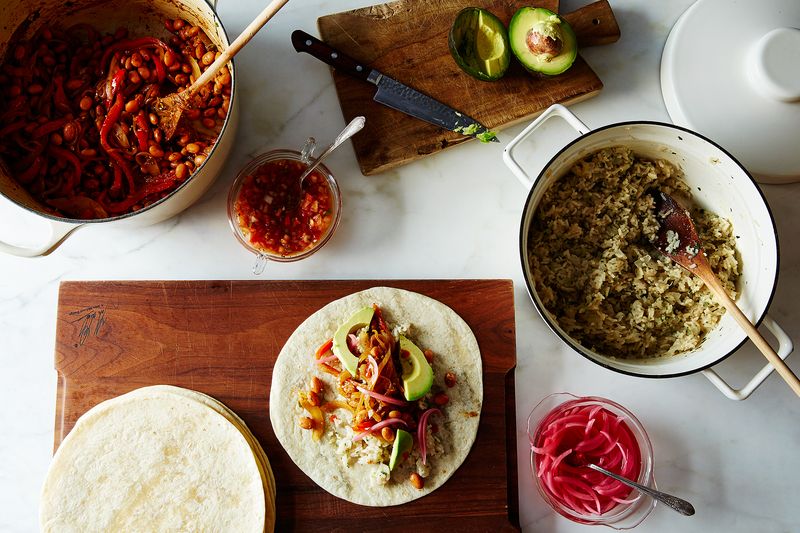
The fact of the matter is that yes, it’s relatively easy to get the protein you need if you’re eating a well-rounded, calorically adequate plant-based diet. And no, protein deficiency isn’t common in the Western world.
That said, it’s plenty easy to skimp on protein—not enough to court a deficiency, per se, but enough to leave you feeling dissatisfied or hungry after mealtimes. New vegans who don’t give any thought to protein at all (or dismiss thinking about protein as unnecessary) might find themselves doing what I did in my very early days, which was to be a pasta-tarian and salad-tarian—nary a bean in sight.
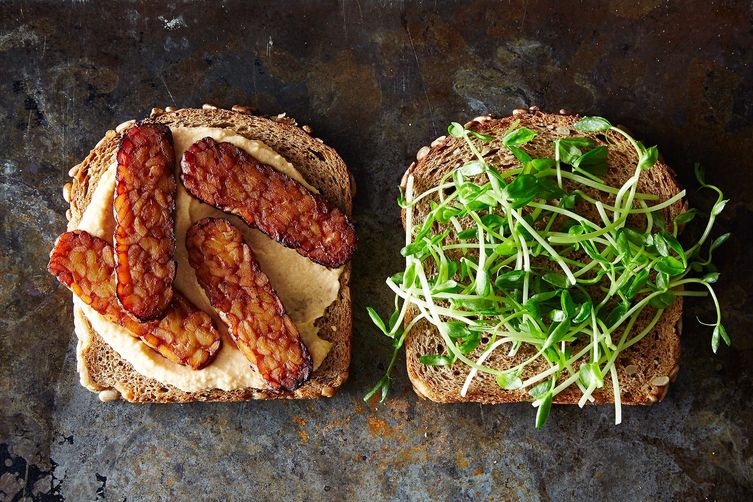
Oftentimes the temptation as a vegan is to try to replicate that classic protein/starch/vegetable template with the substitution of tofu or tempeh in place of chicken, fish, meat, or foul. That’s fine, because tofu and tempeh are awesome, but it can be limited in terms of creativity. The world of vegan protein stretches far beyond tofu and tempeh, and it’s a wise idea, both nutritionally and culinarily, to sample different combinations of protein sources. Being vegan has taught me to regard a high protein meal as something integrated and complex (a split pea stew, for instance, or a hearty grain salad of quinoa, legumes, and seeds), rather than looking for a single block of concentrated protein on my plate.
Here are some surprisingly protein-rich vegan ingredients, all of which can be paired together effortlessly to create protein dense meals:
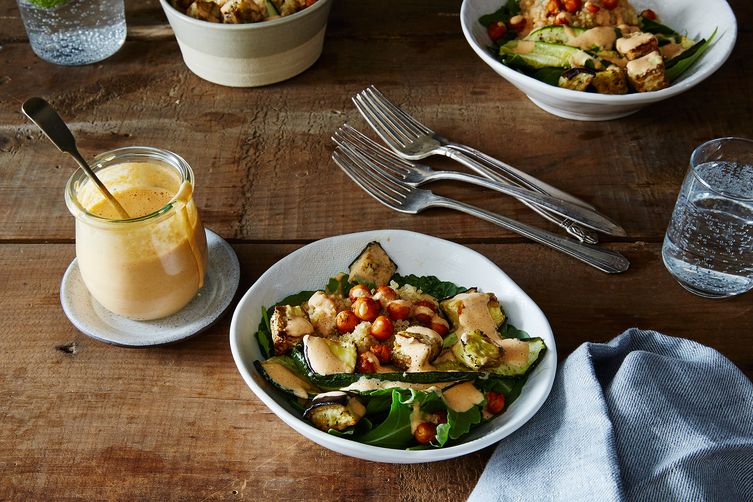
Combining these foods makes it easy to create meals that are plenty high in protein, not to mention delicious and wholesome. One of my favorite winter breakfasts is a warm porridge of quinoa, almond milk, and shelled hemp seeds, served with fresh or stewed fruit. It’s a delight to eat, and it contains about 15 grams of protein—which is actually more than two eggs (just sayin’).
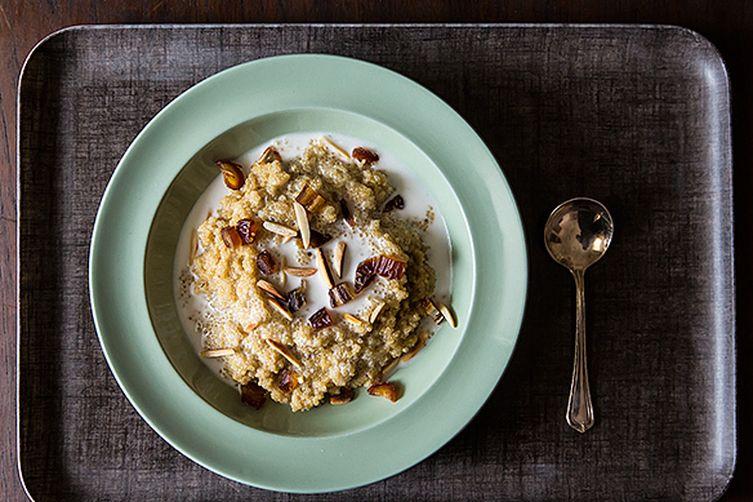
The following burrito recipe is a perfect example of a meal that’s effortlessly protein rich—and there’s no obligatory slab of tofu at the center of the plate. It’s a simple pairing of pinto beans and rice, served up in a whole grain wrap with plenty of fixings. Once upon a time, beans and rice were thought to be an ideal protein for vegetarians and vegans because together they comprise what’s known as a “complete protein”—one that contains all of the amino acids we need to source from food.
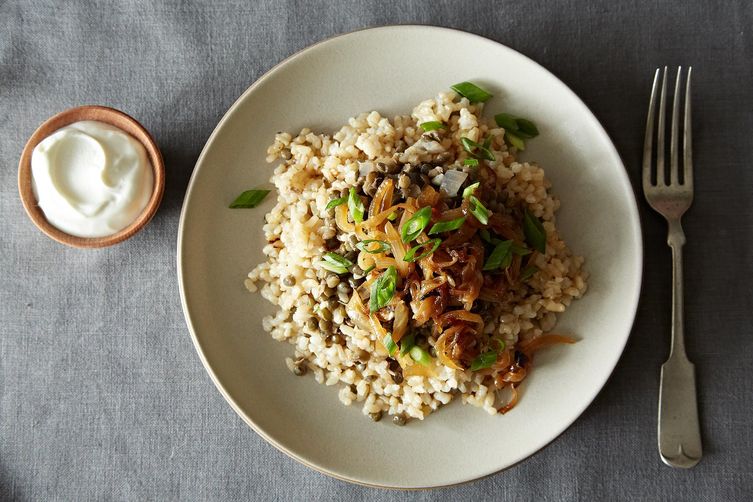
Current nutrition wisdom is that we don’t actually have to seek out complete proteins with every meal, because our bodies can assemble them efficiently when given an array of amino acids building blocks from a well-rounded diet. Still, it doesn’t hurt to seek out some of the most well-known, plant-based complete proteins, including soy foods, quinoa, and the time-honored rice and beans combo. And when rice and beans taste this flavorful, it’s easy to make them your new favorite protein source.
This burrito tastes great as it is, and the individual components can be saved and eaten in different ways (if you have pinto beans leftover, try them spread on two corn tortillas for an easy tostada breakfast; leftover rice can be tossed into a lunch salad). Cooking the beans from scratch will result in perfect beans and a feeling of DIY pride, but it’s totally fine to use canned pinto beans in a pinch.
Fully Loaded Vegan Burritos

Serves 4 to 6
For the beans and vegetables:
1 cup dry pinto beans, picked over (or 2 cans pinto beans, rinsed and drained of liquid)
1 tablespoon olive oil
1 large white onion, thinly sliced
1 poblano or jalapeño chili, stem and seeds removed, finely chopped
1 red bell pepper, sliced into thin strips
2 cloves garlic, minced
1/2 teaspoon salt
1 1/2 teaspoons ground chili powder
1 teaspoon ground cumin
1 1/2 tablespoons lime juice
Dash red pepper flakes
Four to six 9- or 10-inch flour or corn tortillas
Optional fixings: sliced avocado, salsa, chopped green onions, cashew cream or cashew queso, hot sauce, guacamole, etc.
For the rice:
1 tablespoon olive oil
1 white or yellow onion, diced
1 cup white or brown basmati or long-grain rice, rinsed
1/4 teaspoon salt
2 1/4 cups low-sodium vegetable broth or water
2 teaspoons lime juice
1/4 cup tightly packed, chopped cilantro
See the full recipe (and save and print it) here.
This article originally appeared on Food52
More from Food52:
More Must-Reads from TIME
- Donald Trump Is TIME's 2024 Person of the Year
- Why We Chose Trump as Person of the Year
- Is Intermittent Fasting Good or Bad for You?
- The 100 Must-Read Books of 2024
- The 20 Best Christmas TV Episodes
- Column: If Optimism Feels Ridiculous Now, Try Hope
- The Future of Climate Action Is Trade Policy
- Merle Bombardieri Is Helping People Make the Baby Decision
Contact us at letters@time.com